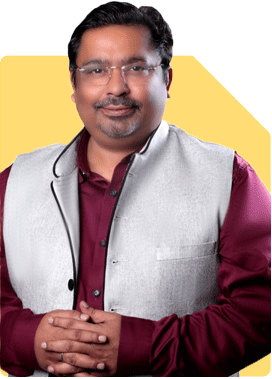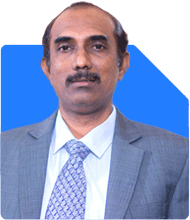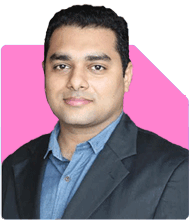Hello Sir, I am 34 years old male earning 58k per month and started sip in mf a year back. Currently investing 8k/month in different mf's. 2.5k in parag parikh flexi cap, 1.5k in nippon india small cap, 2k in canara robecco bluechip, 2k in motilal oswal midcap. Also did 20k lumpsum in hdfc balanced ad. fund and 10k in sbi multi asset fund. I would like to increase the amount and can invest 10-12k more apart from monthly 8k. Pls suggest if the above funds are good to continue or need changes. Also suggest some other funds where i should park my 10-12k. I am a moderate risk taker as i am the only bread earner and looking for 15-20 years of long term investment. Thank you very much.
Ans: You have started your investment journey quite well. Investing Rs. 8,000 per month in mutual funds and also allocating Rs. 30,000 as lumpsum shows discipline. You are 34 years old, earning Rs. 58,000 per month, and ready to invest Rs. 10,000–12,000 more. You are also the only breadwinner, so protecting your investments is very important. Let us analyse your portfolio, risk level, and provide a complete 360-degree plan.
Understanding Your Current Portfolio
Flexi-Cap Fund (Rs. 2,500/month)
Offers flexibility to invest across large, mid, and small-cap stocks.
Small-Cap Fund (Rs. 1,500/month)
High return potential but very volatile.
Bluechip Fund (Rs. 2,000/month)
Invests in large companies, more stable.
Mid-Cap Fund (Rs. 2,000/month)
Good growth but carries moderate-to-high risk.
Balanced Advantage Fund (Rs. 20,000 lumpsum)
Mix of equity and debt, useful during volatile periods.
Multi-Asset Fund (Rs. 10,000 lumpsum)
Diversifies across equity, debt, and gold.
Your current mix is already well diversified across categories. That is a good step.
Positive Aspects in Your Portfolio
You are investing in different types of mutual funds.
Exposure is well spread across equity and hybrid.
You are already using SIP mode which encourages discipline.
Your goal horizon is long-term (15–20 years), which is ideal for wealth creation.
You have correctly identified your risk level as moderate.
All these show thoughtful planning. Well done so far.
Areas That Need Some Adjustments
Small-cap and mid-cap funds have higher risks. You should limit their share.
Flexi-cap and bluechip funds may have overlap in large-cap exposure.
Lumpsum in hybrid funds is good, but avoid more lumpsum in equity going forward.
No exposure yet to international equity or gold in SIP form.
SIP amount is only 13–14% of your income. You can go up to 25–30% comfortably.
A few smart tweaks can improve long-term results.
Why Actively Managed Funds Are Better Than Index Funds
Index funds only copy the market. They cannot beat it.
They do not avoid underperforming stocks. No stock selection happens.
Index funds do not adjust to market cycles. They stay passive even in crashes.
Actively managed funds aim to beat benchmarks. They try to reduce downside too.
For a moderate-risk investor like you, this matters a lot.
Good fund managers handle risk better and seek extra returns.
So, staying with actively managed funds is the correct choice for you.
How to Use the Additional Rs. 10,000–12,000 per Month
Now you want to invest more monthly. Here's a structured plan to distribute it well.
1. Core Portfolio (60–65% of total SIPs)
Add Rs. 3,000 more to your flexi-cap fund.
Add Rs. 2,000 more to your bluechip fund.
This strengthens your stable equity base.
2. Supporting Equity (20–25% of total SIPs)
Continue Rs. 1,500 in small-cap fund. Do not increase it.
Continue Rs. 2,000 in mid-cap fund. Do not increase it.
Add a new multi-cap fund with Rs. 1,000 per month.
3. Hybrid/Debt (10–15% of total SIPs)
Add Rs. 2,000 in a short-duration debt or conservative hybrid fund.
4. Diversification Add-ons (5–10% of total SIPs)
Add Rs. 1,000–2,000 in gold fund via SIP.
Add Rs. 2,000 in an international equity feeder fund.
This will use your full extra budget of Rs. 10,000–12,000.
Suggested Monthly SIP Structure (New + Existing)
Flexi-cap fund: Rs. 5,500
Bluechip fund: Rs. 4,000
Mid-cap fund: Rs. 2,000
Small-cap fund: Rs. 1,500
Multi-cap fund: Rs. 1,000
Debt/Hybrid fund: Rs. 2,000
Gold fund: Rs. 1,500
Global equity fund: Rs. 2,000
Total: Around Rs. 19,500 per month
You can adjust slightly depending on comfort.
Why Multi-Cap Fund?
Invests across large, mid, and small cap in fixed proportion.
Offers better diversification than flexi-cap.
Works well in a long-term portfolio.
It complements your existing funds.
Why Gold SIP?
Gold does not move in same direction as stock market.
It provides safety during uncertain periods.
Also works as a hedge against inflation.
But keep it below 10% of total investments.
Why Global Equity?
Provides exposure to large international companies.
Adds variety across geographies and currencies.
Helps reduce home-country concentration.
This is optional but good for long-term growth.
Monitoring and Review Strategy
Review performance of funds every 6 months.
Rebalance only if allocation goes off by 5–10%.
Avoid frequent switching based on short-term returns.
Reallocate if your income or goals change.
Take help from Certified Financial Planner once a year.
This keeps your plan aligned with your financial goals.
Important Do's and Don'ts
Do's:
Increase SIP amount yearly as income grows.
Reinvest dividends or capital gains for compounding.
Keep emergency fund for 6 months expenses.
Stick to SIPs during market corrections.
Don'ts:
Do not invest in index funds; they don’t manage risk actively.
Do not switch to direct funds. You lose MFD and CFP guidance.
Do not stop SIPs in panic.
Do not chase last year’s best fund.
Follow a steady, emotion-free approach.
Tax Efficiency and Withdrawal Strategy
Long-term capital gains above Rs. 1.25 lakh taxed at 12.5%.
Short-term gains in equity taxed at 20%.
Debt mutual funds gains taxed as per your slab.
Withdraw using SWP only after 10–12 years.
Avoid full withdrawals at once to reduce tax burden.
Plan withdrawals slowly to optimise tax.
Building Discipline with SIPs
SIPs remove emotion from investing.
Rupee cost averaging lowers average purchase price.
Even Rs. 500 increase yearly adds big difference over time.
Top up your SIPs every year with income growth.
You are building strong habits. That’s the key to long-term wealth.
Insurance Coverage Check
Ensure you have Rs. 50 lakh or more term insurance.
Check if medical insurance covers family sufficiently.
Review policies yearly.
If you hold any endowment or ULIP plans, consider surrendering.
Switch those to mutual funds for better growth.
Emergency Fund Planning
Keep Rs. 1 lakh–1.5 lakh in liquid fund or sweep FD.
Do not mix this with your SIP investments.
Use only during job loss or major medical emergency.
It protects your investments from sudden breakage.
Finally
You are already on the right path.
Your fund choices show maturity and balanced approach.
By adding Rs. 10,000–12,000 more in a structured way, you boost your portfolio strength.
Diversifying into hybrid, gold, and global equity increases safety without losing growth.
Staying consistent for 15–20 years will multiply your wealth.
Discipline and review will keep everything in control.
With regular investment and correct allocation, your financial freedom will come much faster.
You are doing very well. Stay focused and keep reviewing with a Certified Financial Planner.
Best Regards,
K. Ramalingam, MBA, CFP,
Chief Financial Planner,
www.holisticinvestment.in
https://www.youtube.com/@HolisticInvestment





























